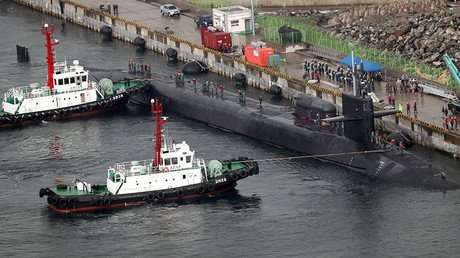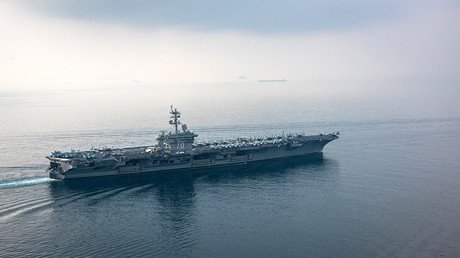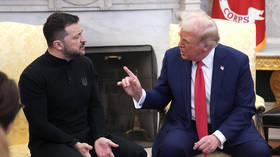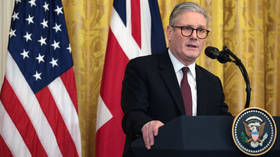Japan deploys warship to protect US vessel, authorizes ‘minimum’ use of firepower (VIDEO)

Japan has reportedly deployed a helicopter carrier and authorized it to use weapons, if necessary, to escort and protect a US supply vessel. The mission, performed under the country’s expanded military doctrine, marks the first such mission since WWII.
Defense Minister Tomomi Inada ordered the Izumo Maritime Self-Defense Force helicopter carrier to protect a US Navy supply ship, which is heading towards the Pacific to resupply the American armada sent by Donald Trump to keep North Korean nuclear ambitions at bay, sources told Kyodo news.
The Japanese helicopter carrier is set to depart Yokosuka port in Kanagawa Prefecture to Monday to escort the US Navy supply ship from waters off the Boso Peninsula, near Tokyo, to the area off Shikoku, one of the four main islands of Japan.
Japanese media reports that the US ship could be delivering supplies to the aircraft carrier – the USS Carl Vinson striking group, that is now conducting a joint exercise with South Korea’s navy in the Sea of Japan.
To ensure success of their escort mission, the Japanese seamen have been authorized the “minimum necessary use of weapons,” to deter any attacks amid North Korean threats to sink US ships, the Japan Times reports.
It has not been specified if this is a one-time mission and how many American ships Izumo will protect.
READ MORE: US, Japan in joint show of force amid simmering row with N. Korea
The US Navy strike group heading toward the Korean Peninsula entered the Sea of Japan last Saturday. Two Japanese destroyers, the Samidare and the Ashigara joined the USS Carl Vinson’s group to carry out “various tactical exercises.”
LATEST: #NorthKorea ballistic missile test ‘estimated to have failed’ – Seoul https://t.co/kkydO8gbat
— RT (@RT_com) April 28, 2017
Tensions between North Korea and the US have been growing exponentially over the past few weeks, as the US has repeatedly pressed Pyongyang to abandon its nuclear and missile programs.
President Donald Trump sent the USS Carl Vinson into Korean waters as part of a “very powerful armada” in order to intimidate Pyongyang, which has continued to test new ballistic missiles, despite all the warnings, UN sanctions and international condemnation.
Last Monday, North Korea threaten to reduce a US strike force to a sea wreck in case of provocations.
“Our revolutionary forces are combat-ready to sink a US nuclear powered aircraft carrier with a single strike,” according to Rodong Sinmun, the official newspaper of the North’s ruling Workers’ Party.
Monday's Izumo deployment will set a new milestone for the Japanese Navy which has not escorted any military vessels, outside of troop exercises, since the adoption of a pacifist constitution following Japan's defeat in World War II.
In 2015, Japanese Prime Minister Shinzo Abe and the ruling Liberal Democratic Party passed legislation to allow the country’s military to participate in foreign conflicts, overturning its previous policy of fighting only in self-defense.
Since the Japanese constitution only allowed Japanese armed forces to act in self-defense, the legislation reinterpreted the relevant passages to allow the military to operate with overseas allies in “collective self-defense.”
Tensions Rise: US, S. Korea kick off naval war games; N. Korean Leader Kim inspects live fire drills https://t.co/e5Tk62WYQxpic.twitter.com/aTlxVnbTSy
— RT (@RT_com) April 30, 2017
The latest Kyodo News survey showed the Japanese are divided over whether or not to amend the Article 9 of the Constitution, which outlaws war as a means to settle international disputes. According to the figures, 49 percent of some 3,000 mail-in respondents said Article 9 must be revised while 47 percent oppose the change.
Some 75 percent of respondents who support the pacifist constitution claimed that Article 9 allowed the country to stay out of world conflicts since World War II.
Sixty-six percent of those who leaned towards amending the cornerstone article cited “the changing security environment surrounding the country, including North Korea’s nuclear and missile programs and China’s military expansion,” as the reason to revise the 1947 document.















